132 start with S start with S
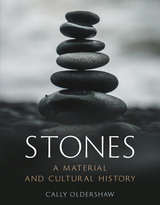
From small beach pebbles to huge megaliths, stones have been revered, collected, enhanced, sculpted, or engraved for practical and artistic purposes throughout the ages. They have been used to delineate boundaries and to build homes and shelters and utilized for cooking, games, and competitions. This surprising and fascinating compendium of stone facts, myths, and stories reveals the impact and importance of stones in our history and culture. Cally Oldershaw introduces the science in an accessible way and covers the aesthetic appeal of stones, their practical uses, and metaphysical properties. With an eclectic mix of examples from the Stone Age to the present, Stones engagingly excavates the story of this essential matter.
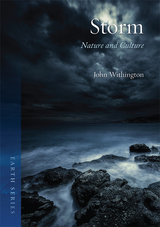
Withington shows how storms have changed the course of human history. From Roman times to the modern day, he shows how their devastating effects have wiped out entire communities, changed the fates of battle, and even reset the entire planet. He also shows how beneficial they have been to us: as an important feature of our atmosphere and climate, but also as a source of inspiration for nearly every artist who has ever lived, from Homer to Rembrandt, in works from the Old Testament to Robinson Crusoe. Beautifully illustrated, this book offers a fascinating look at Earth’s most fearsome events.
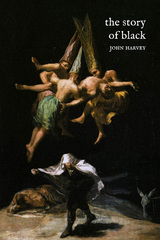

Are they frivolous or practical? Follies are buildings constructed primarily for decoration, but they suggest another purpose through their appearance. In this visually stunning book, Celia Fisher describes follies in their historical and architectural context, looks at their social and political significance, and highlights their relevance today. She explores follies built in protest, follies in Oriental and Gothic styles, animal-related follies, waterside follies and grottoes, and, finally, follies in glass and steel. Featuring many fine illustrations, from historical paintings to contemporary photographs and prints, and taking in follies from Great Britain to Ireland, throughout Europe, and beyond, The Story of Follies is an amusing and informative guide to fanciful, charming buildings.
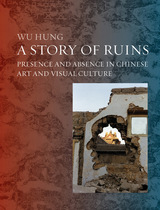
Wu Hung leads us through an array of traditional and contemporary visual materials, including painting, architecture, photography, prints, and cinema. A Story of Ruins shows how ruins are integral to traditional Chinese culture in both architecture and pictorial forms. It traces the changes in their representation over time, from indigenous methods of recording damage and decay in ancient China, to realistic images of architectural ruins in the nineteenth and twentieth centuries, to the strong interest in urban ruins in contemporary China, as shown in the many artworks that depict demolished houses and decaying industrial sites. The result is an original interpretation of the development of Chinese art, as well as a unique contribution to global art history.
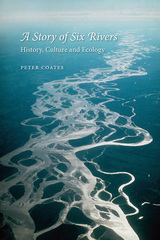
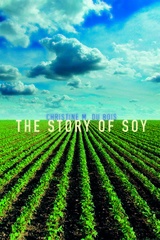
Traveling across the globe and through millennia, The Story of Soy includes a cast of fascinating characters as vast as the soy fields themselves—entities who’ve applauded, experimented with, or despised soy. From Neolithic villagers to Buddhist missionaries, European colonialists, Japanese soldiers, and Nazi strategists; from George Washington Carver to Henry Ford, Monsanto, and Greenpeace; from landless peasants to petroleum refiners, Du Bois explores soy subjects as diverse as its impact on international conflicts, its role in large-scale meat production and disaster relief, its troubling ecological impacts, and the nutritional controversies swirling around soy today. She also describes its genetic modification, the scandals and pirates involved in the international trade in soybeans, and the potential of soy as an intriguing renewable fuel. Featuring compelling historical and contemporary photographs, The Story of Soy is a potent reminder never to underestimate the importance of even the most unprepossesing sprout.
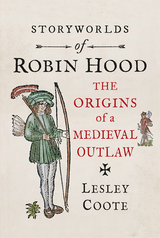
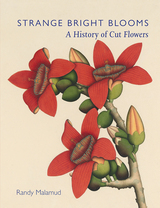
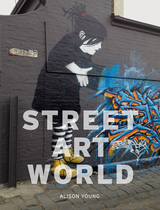
What exactly is street art? Is it the same as graffiti, or do they have different histories, meanings, and practitioners? Who makes it? Who buys it? Can it be exhibited at all, or does it always have to appear unsanctioned? Talking with artists, collectors, sellers, and buyers, author Alison Young reveals an energetic world of self-made artists who are simultaneously passionate about an authentic form of expression and ambivalent about the prospects of selling it to make a living—even a fabulously good one.
Drawing on over twenty years of research, she juxtaposes the rise and fall of art markets against the vibrancy of the street and urban life, providing a rich history and new ways of contextualizing the words and images—some breathtakingly beautiful—that seem to appear overnight in cities around the world.
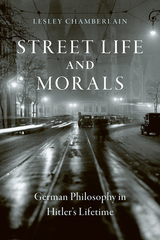
German philosophy, famed for its high-minded Idealism, was plunged into crisis when Germany became an urban and industrial society in the late nineteenth century. The key figure of this shift was Immanuel Kant: seen for a century as the philosophical father of the nation, Kant seemed to lack crucial answers for violent and impersonal modern times. This book shows that the social and intellectual crisis that overturned Germany’s traditions—a sense of profound spiritual confusion over where modern society was headed—was the same crisis that allowed Hitler to come to power. It also describes how German philosophers actively struggled to create a new kind of philosophy in an effort to understand social incoherence and technology’s diminishing of the individual.

This is the story of the zest for life that gripped New York in the postwar years of the 1920s. The decade ushered in an era of almost unprecedented prosperity and economic expansion that made New York the powerhouse of America and fueled a wave of creativity in music, fashion, literature, and architecture. Strike Up the Band explores how the city became a magnet for a host of outstanding personalities, from literary figures to sports stars, musicians, composers, and journalists, and pays a visit to the places they frequented, such as the Cotton Club and Broadway theaters. From the skyline to the sidewalk, the city itself also transformed as it was redeveloped in the 1920s building boom, with Art Deco becoming the style that dominated the new era.
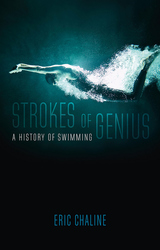
Strokes of Genius traces the history of swimming from the first civilizations to its current worldwide popularity as a sport, fitness pastime, and leisure activity. Chaline explores swimming’s role in ritual, early trade and manufacturing, warfare, and medicine, before describing its transformation in the early modern period into a leisure activity and a competitive sport—the necessary precursors that have made it the most common physical pastime in the developed world.
The book celebrates the physicality and sensuality of swimming—attributes that Chaline argues could have contributed to the evolution of the human species. Swimming, like other disciplines that use repetitive movements to train the body and quiet the mind, is also a means of spiritual awakening—a personal journey of discovery. Swimming has attained the status of a cultural marker, denoting eroticism, leisure, endurance, adventure, exploration, and excellence.
Strokes of Genius shows that there is not a single story of human swimming, but many currents that merge, diverge, and remerge. Chaline argues that swimming will become particularly important as we look toward a warmer future in which our survival may depend on our ability to adapt to life in an aquatic world.
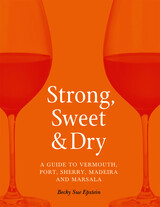
Strong, Sweet and Dry is the ultimate guide to these freshly rediscovered palate pleasers. In lively style, Becky Sue Epstein explores the latest fortified wine innovations and trends, along with their colorful history, including the merchants, warriors, and kings who helped bring these beverages into being. Featuring a plethora of enticing images, along with anecdotes, facts, and recipes, this is a superb tour through the long history of fortified wines and their global resurgence today.
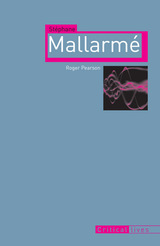
This concise biography of Stéphane Mallarmé (1842–98) blends an account of the poet’s life with a detailed analysis of his evolving poetic theory and practice. “A poet on this earth must be uniquely a poet,” he declared at the age of twenty-two—but what is a poet’s life and what isa poet’s function? In his poems and prose statements and by the example of his life, Mallarmé provided answers to these questions.
In Stéphane Mallarmé, Roger Pearson explores the relationship among Mallarmé’s life, his philosophy, and his writing. To Mallarmé, being a poet consists of a continuous, lifelong investigation of language and its expressive potential. It represents, argues Pearson, a fundamental response to the metaphysical mystery of the human condition and the desire to make sense of it for others. A poet turns everyday banality into prospects of mystery; and a poet, in Mallarmé’s conception, is able to bring all human beings together in heightened awareness and understanding of the “magnificent act of living.”
This concise and engaging biography tells the story of a fascinating and utterly unique voice in French poetry, one that was often overshadowed by other Symbolist writers. It is an essential read for students of literature and nineteenth-century France.
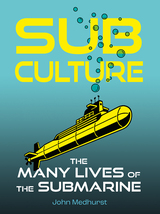
Sub Culture explores the crucial role of the submarine in modern history, its contribution to scientific progress and maritime exploration, and how it has been portrayed in art, literature, fantasy, and film. Ranging from the American Civil War to the destruction of the Russian submarine Kursk in 2000, the book examines the submarine’s activities in the First and Second World Wars, the Cold War, and in covert operations and marine exploration to the present day. Citing the submarine, particularly the nuclear submarine, as both ultimate deterrent and doomsday weapon, Sub Culture examines how its portrayal in popular culture has reinforced, and occasionally undermined, the military and political agendas of the nation-states that deploy it.

As Smith demonstrates, sugar’s past is chockfull of determined adventurers: relentless sugar barons and plantation owners who worked alongside plant breeders, food processors, distributors, and politicians to build a business based on our cravings. Exploring both the sugarcane and sugar beet industries, he tells story after story of those who have made fortunes and those who have met demise all because of sugar’s simple but profound hold on our palates. Delightful and surprisingly action-packed, this book offers a layered and definitive tale of sugar and the many people who have been caught in its spell—from barons to slaves, from chefs to the countless among us born with that insatiable devil, the sweet tooth.
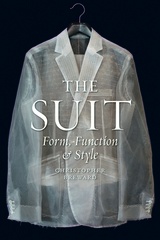
The Suit unpicks the story of this most familiar garment, from its emergence in western Europe at the end of the seventeenth century to today. Suit-wearing figures such as the Savile Row gentleman and the Wall Street businessman have long embodied ideas of tradition, masculinity, power, and respectability, but the suit has also been used to disrupt concepts of gender and conformity. Adopted and subverted by women, artists, musicians, and social revolutionaries through the decades—from dandies and Sapeurs to the Zoot Suit and Le Smoking—the suit is also a device for challenging the status quo. For all those interested in the history of menswear, this beautifully illustrated book offers new perspectives on this most mundane, and poetic, product of modern culture.
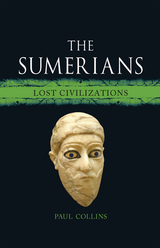
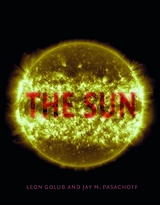
Leon Golub and Jay M. Pasachoff offer an engaging and informative account of solar science and its history, drawing on centuries of study by solar astronomers who have looked to the Sun not only to learn about our own solar system but also about what lies in the distant wilderness of faintly glimmering stars. They skim along the surface of the Sun, which is decorated with sunspots, discussing these fascinating magnetic aberrations and the roughly eleven-year cycles they abide. They follow seismic waves into the interior of the Sun and its unending nuclear fusion. They show us what is unveiled in solar eclipses and what new views and knowledge our space exploration has afforded us. They brave solar weather, and they trace the arcs of radiation and particles whose effects we can see on earth in phenomena such as the northern and southern lights.
Glowing with a wide assortment of astonishing images, this beautifully illustrated guide will delight everyone, from those who know what a coronagraph is to those who simply like to step out on a bright day, close their eyes, and feel the Sun’s warmth upon their skin.
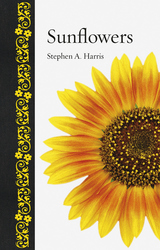
Unraveling the interplay between human cultures and the biology of these spectacular blooms over the last six thousand years, Sunflowers explores our persistent fascination with this family and how our uses of the plants have changed over millennia. Found in almost all habitats, from the driest deserts and tallest mountains to grasslands and urban wastelands, the sunflower family includes more than 32,000 species. It produces hugely popular and economically valuable ornamental flowers, as well as familiar flavorings such as tarragon and artemesia, and its members are also used in the production of antimalarial drugs, artificial sweeteners, insecticide, and fish poisons. Illustrated with many rarely seen images of the sunflower family, this beautiful volume sheds surprising new light on these familiar, sunniest of flowers.

Exploring the astonishing scope of Sontag’s life and work, Maunsell traces her growth during her intellectual career at Chicago, Oxford, and the Sorbonne. He discusses her short-lived marriage to Philip Rieff at seventeen, the birth of her son, and her subsequent relationships with women. As Maunsell follows the extraordinary arc of her life, he delves into her literary life in New York in the 1960s; travels with her to Hanoi, Cuba, and China; and surveys her work in Sweden and France in the 1970s, where she turned to filmmaking. Maunsell concludes by examining her miraculous rebirth as a novelist and critic in the 1980s and ’90s after her diagnosis with cancer in the mid-1970s.
Providing a full picture of Sontag as a private person and public figure, this concise biography casts new light on this pivotal figure in literary and cultural history.
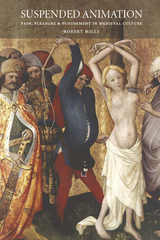
Just as in medieval times, Robert Mills argues, it is the threat of violence—not the reality—that continues to structure our lives. To illustrate this "aesthetics of suspense," Mills draws on extensive and disturbing examples from medieval iconography, contemporary philosophy, and even pornography, ranging from the vivid depictions of Hell in Tuscan frescoes to Billie Holiday's famously wrenching song "Strange Fruit". Mills reveals how these uncomfortable images and texts expose a modern self-deception, and he further explores how medieval images evoked a pleasure revealingly close to that found in modern depictions of sexuality. Suspended Animation also makes a fresh contribution to theoretical debates on pre-modern gender and sexuality. Mills's comprehensive analysis demonstrates that—as wartime prisoner abuse incidents at Abu Ghraib and Guantánamo Bay have recently indicated—our notions of ourselves as not-medieval (that is, civilized) not only fail to prepare us for modern torture and warfare but also lead us into complicity with self-proclaimed moral and civic leaders.
Whether considering a medieval painting of a Christian martyr or the immense popularity of grotesque historical tourist attractions such as the London Dungeons, Suspended Animation argues that images of death and violence are as pervasive today as they were in the Middle Ages, serving as potent reminders of the link between the modern and the medieval era.
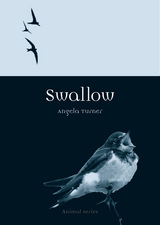
Destruction of their natural habitat, however, has proved dangerous to some species of swallow, and recent years have seen some populations dwindling to the point of near-extinction. Turner outlines the reasons for these declines as part of her engaging account of the natural and cultural history of this beloved bird.
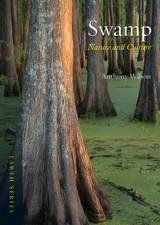
Covering not only swamps and bogs but also marshes and wetlands, Swamp ventures into the cultural and ecological histories of these mysterious, mythologized, and misunderstood landscapes. Anthony Wilson takes readers into swamps across the globe, from the freshwater marshes of Botswana’s tremendous Okavango delta, to the notable swamps between the Tigris and Euphrates rivers, to the peat bogs in Russia, the British Isles, and Scandinavia, which have been used as energy sources for centuries. It explores ideas and representations of wetlands across centuries, cultures, and continents, considering legend and folklore, mythology, literature, film, and natural and cultural history. As it plumbs the murky depths of swamps from the distant past to an uncertain future, Swamps provides an engaging, accessible, informative, and lavishly illustrated journey into these fascinating landscapes.

The natural history of the swan is surprisingly complex, as Peter Young reveals, delving into the bird’s habitat and feeding habits, the physiological details of the eight surviving species and several extinct ones, the bird’s power and endurance, and the formation flying that allows them to conserve energy and fly great distances with speed. Swan gives equal treatment to the long and rich role of the swan in human culture, from the Greek myth of Leda and the Swan to the bird’s portrayal in sculpture, furniture, and brand name logos. Young also details the challenges facing conservation efforts to protect swans from human consumption and material goods.
An engrossing account, Swan will be a welcome addition to the bookshelf of all who admire this beautiful bird.
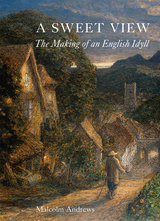
A Sweet View explores how writers and artists in the nineteenth century shaped the English countryside as a partly imaginary idyll, with its distinctive repertoire of idealized scenery: the village green, the old country churchyard, hedgerows and cottages, scenic variety concentrated into a small compass, snugness and comfort. The book draws on a very wide range of contemporary sources and features some of the key makers of the “South Country” rural idyll, including Samuel Palmer, Myles Birket Foster, and Richard Jefferies. The legacy of the idyll still influences popular perceptions of the essential character of a certain kind of English landscape—indeed for Henry James that imagery constituted “the very essence of England” itself. As A Sweet View makes clear, the countryside idyll forged over a century ago is still with us today.
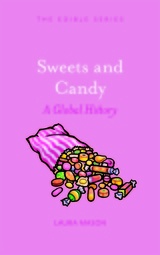
From marzipan pigs and nutty nougat to bubblegum and bonbons, Sweets and Candy looks beneath the glamour and sparkle to explore the sticky history of confectionary. Methods for making sweets can be traced back to the importance of sugar in Arabic medicine and the probable origin of this practice in ancient India—a place where sweetness is still important for both humans and gods. Gorging on gobstoppers from these early candy antecedents to modern-day delectables, Laura Mason describes the bewildering and fascinating ways in which different cultures have made, consumed, valued, and adored sweets throughout history. Featuring a selection of mouthwatering illustrations and scrumptious recipes to try at home, this global candy trail will delight sweet-toothed foodies and history buffs everywhere.
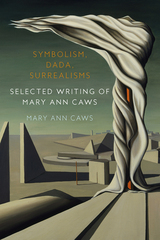
Throughout her long, highly distinguished career writing about literature and art, Mary Ann Caws has excavated, illuminated, and examined in depth the most intriguing works and personalities of Symbolism, Dada, Surrealism, and beyond. In these concise, but always colorful and insightful articles, Caws brings us fresh portraits of the most famous figures and introduces us to the writers and artists who merit more attention than they’ve received, with a special focus on female writers and artists. The author’s sensitivity to the intersections of eccentric literature and eccentric life infuses each critical essay with the human passions that these essential modernists lived. From Dickinson and Mallarmé to Duchamp and Mina Loy, Caws applies the art of close looking to shrewdly framed slices of the modernist experience.
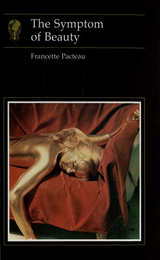
Less interested in the contingent object of desire than the fantasy that frames it, Pacteau considers the staging of the aesthetic emotion. Her analysis extends from the Classical ideals of beauty, through Renaissance poetry to the recent formulations of Hollywood. Her book is an ambitious attempt to describe the mise-en-scène of beauty within a particular field of representations – that of the beauty of a woman.

Esther Leslie considers how radical innovations in chemistry confounded earlier alchemical and Romantic philosophies of science and nature while profoundly influencing the theories that developed in their wake. She also explores how advances in chemical engineering provided visual artists with new colors, surfaces, coatings, and textures, thus dramatically recasting the way painters approached their work. Ranging from Goethe to Hegel, Blake to the Bauhaus, Synthetic Worlds ultimately considers the astonishing affinities between chemistry and aesthetics more generally. As in science, progress in the arts is always assured, because the impulse to discover is as immutable and timeless as the drive to create.

In this absorbing new biography, Alastair Hannay unravels the mystery of Søren Kierkegaard’s short but momentous career. Looking at both Kierkegaard the thinker and the person, Hannay describes this controversial figure’s key concepts and major works alongside the major incidents in his private and public life. From Kierkegaard’s longing for selfhood as expressed at the age of twenty-two, to a self-provoked spat with a satirical weekly that has caused him to be caricatured to this day, to a verbal assault on the Church in the months prior to his early death at the age of forty-two, Søren Kierkegaard is the fascinating story of a man destined to become a thorn in the side of society.
READERS
Browse our collection.
PUBLISHERS
See BiblioVault's publisher services.
STUDENT SERVICES
Files for college accessibility offices.
UChicago Accessibility Resources
home | accessibility | search | about | contact us
BiblioVault ® 2001 - 2024
The University of Chicago Press









